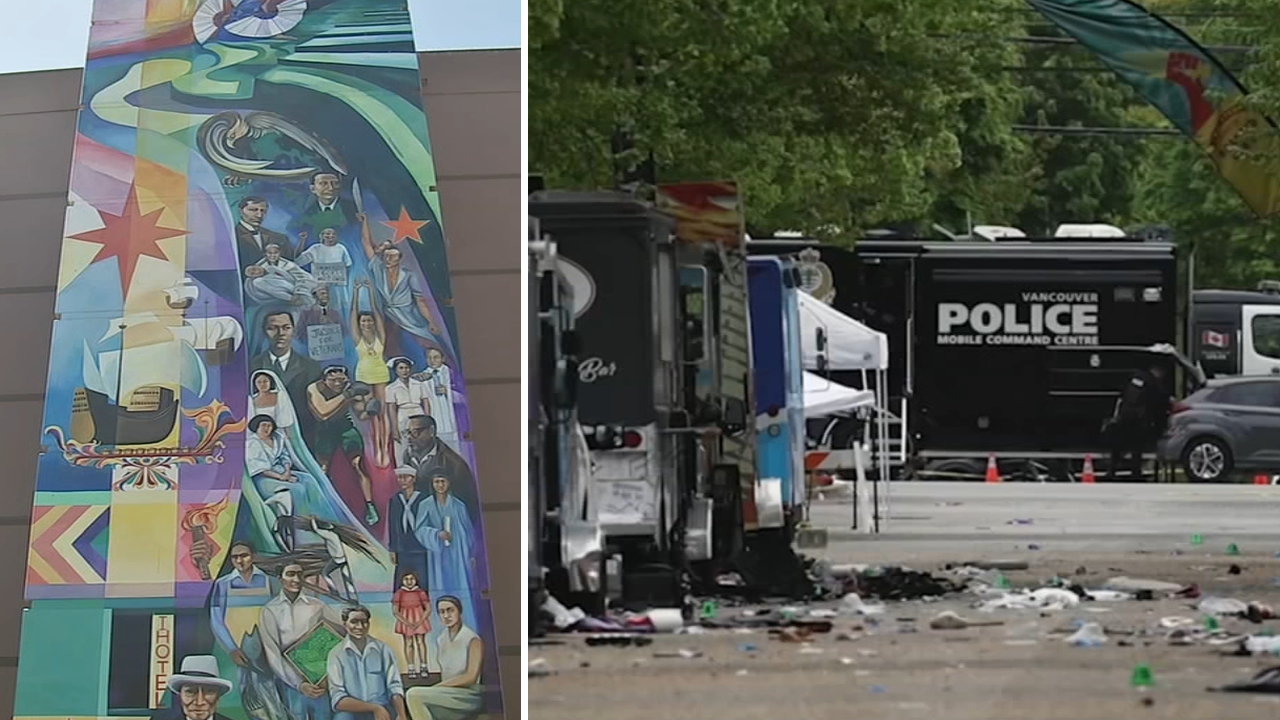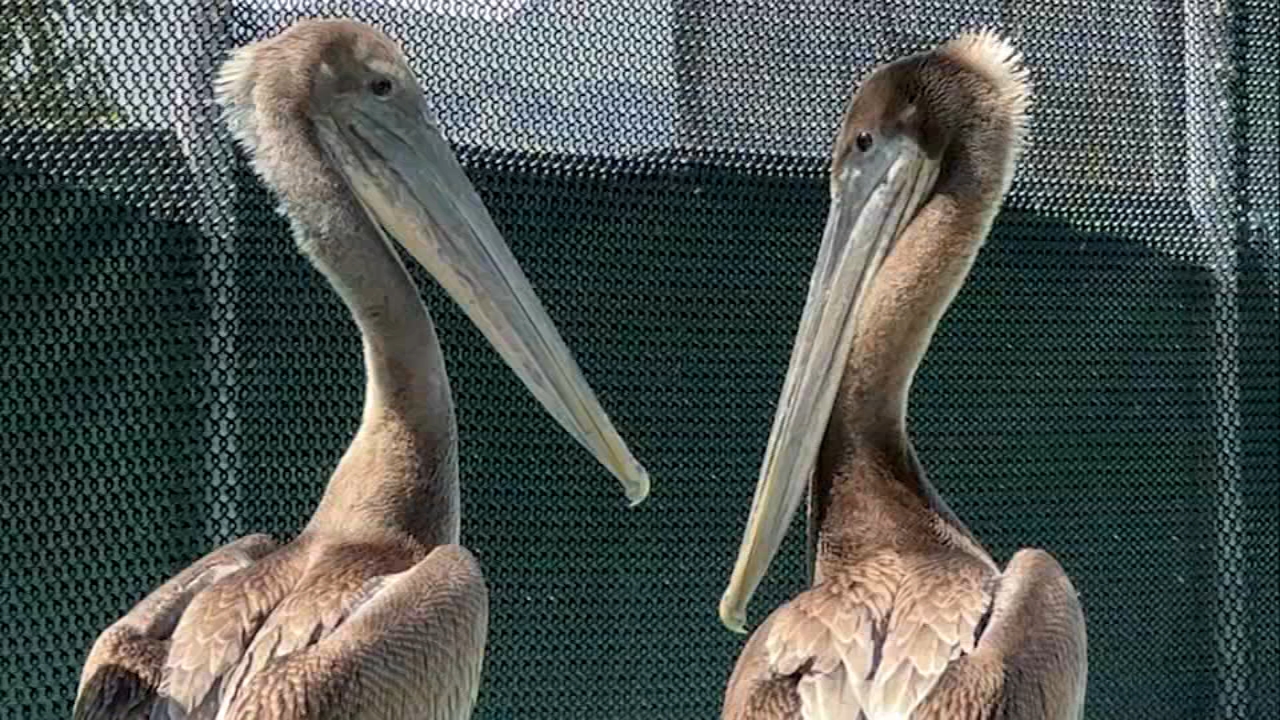Community seeks funding to save SF Japantown's Kinmon Gakuen, an important piece of city's history

SAN FRANCISCO (KGO) -- San Francisco has the oldest Japantown in the country. Japanese-Americans have fought hard to preserve and maintain their cultural heritage. Now they are fighting to preserve the most historic building in Japantown.
The old desks at this Japanese language school take us back to a time when Japanese-American students were excluded from attending public schools in San Francisco.
"They did homeschooling at the time. Because the children had no schools or could not enroll in public schools, there was that need to have this building," said Richard Hashimoto, a board member of the Kinmon Gakuen School.
And so in 1911, Kinmon Gakuen was established at 2031 Bush Street.
But building a new school on that site was nearly impossible because, during that time, Asian immigrants were not allowed to own property in San Francisco.
MORE: Safeway delays closure of SF's Fillmore District store until early next year
"At that time the board was very smart. They went under the name of Golden Gate Institute and filed their paperwork under that institute and did not associate it with any type of Japanese name," Hashimoto said.
They were not all that deceptive, because the name Kinmon Gakuen means Golden Gate School in English. And that's how Kinmon Gakuen was able to purchase its own building.
The school was the pride of Japantown, earning several royal visits from the brother of Emperor Hirohito, Prince Takamatsu in the early 1930s, and then, in 1960, Crown Prince Akihito and his wife visited a classroom. He later became the Emperor of Japan.
"At the time, Kimon Gakuen played, not only a role of education for Japanese-Americans, but it also played the role of passing on traditions," said Diana Matsuda, also a board member of Kinmon Gakuen.
When Japan attacked Pearl Harbor, the U.S. forced Japanese-Americans into internment camps, which forced the school to close. The site turned into a processing center for the thousands who were being shipped to those camps.
MORE: Post COVID-19 pandemic data shows recovery disparities between SF neighborhoods
"A line of Japanese-Americans and their families, all with just suitcases or just sacks of their prized possessions, lining up and this place served as a processing center -- meaning that the government authorities checked everyone in, family by family, and then gave them ID numbers. And they were no longer individuals. They were all considered just a number to the government," Matsuda said.
Within days, this once bustling neighborhood became desolate.
"It was during the war. Lots of labor was needed to help with the war industry. So many African Americans from the south were recruited to come here and because there was no one living here, a lot of the landlords decided that they wanted to make money and rented a lot of the houses and homes and apartments to African Americans who needed jobs and came here for jobs," Matsuda said.
Members of the Black community temporarily took over the Japanese-American school, protecting the artifacts and preserving the culture.
MORE: Business owners discuss how they are surviving and thriving in remaining Bay Area Japantowns
"Because the belongings were safe-guarded, those families could come back and really start this school almost immediately and restart this sense of community," said Emily Murase of the San Francisco Japantown Task Force.
When the Japanese returned, the two communities faced new challenges together.
"Just a few years after that, after they were getting their lives in order, you had something called redevelopment," Murase said.
Because most banks would not lend money to the Japanese-Americans, their homes fell into disrepair.
"And the city suddenly declared this is a blighted area. 'You haven't been maintaining your properties. We are going to bulldoze your businesses and homes,'" Murase said.
MORE: Project in San Jose's Japantown preserving cultural history while providing housing
By 1970, under the leadership of Justin Herman, many homes and businesses in Japantown and the Western Addition were leveled. Ten thousand people were displaced.
Today, Japantown has been dramatically reduced to a six-block area, comprised of the Japan Center with a Ruth Asawa sculpture -- she herself a survivor of the internment camps.
There are only three historic buildings left: the YMCA, YWCA and the Kinmon Gakuen language center.
"The original intent of the school is to go back to six days a week. That's what I want to see personally," Hashimoto said.
MORE: Community demands action to combat crime, homelessness SF's Fillmore District
But that would require a complete retrofit at an estimated $20 million. While the state and the city have financially contributed, more money is needed to complete the intended project.
"It's so important that we have this resource, this Japanese language school to really rectify all that was lost during the war-time incarceration," Murase said.
"We have a history of over 133 years here in this community, and this building is testament and physical testament to our history," Matsuda added.
If you have the means and would like to donate to help in the efforts to preserve Kinmon Gauken, click here.
If you're on the ABC7 News app, click here to watch live








